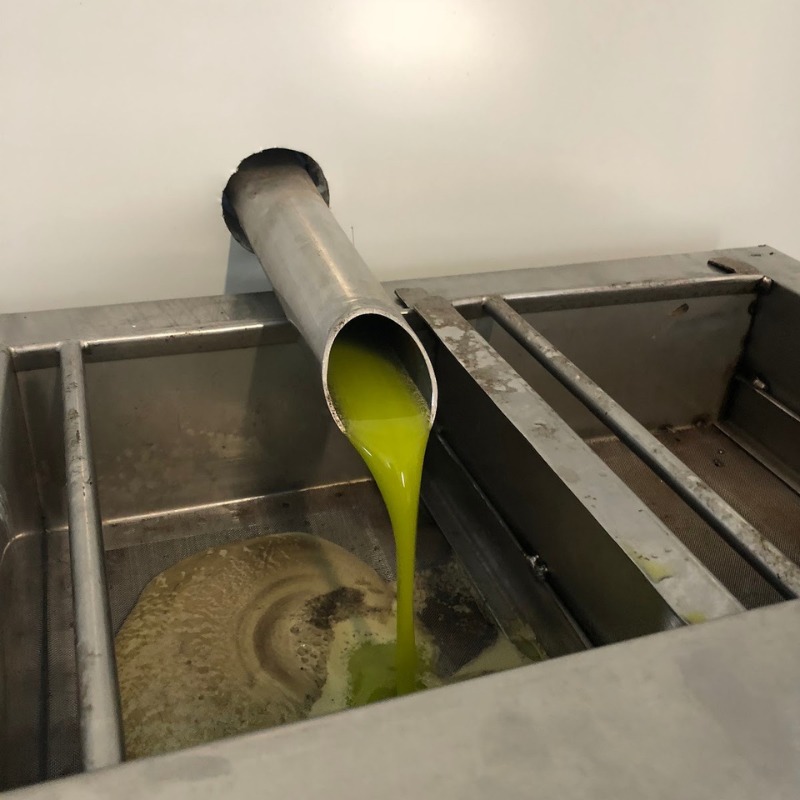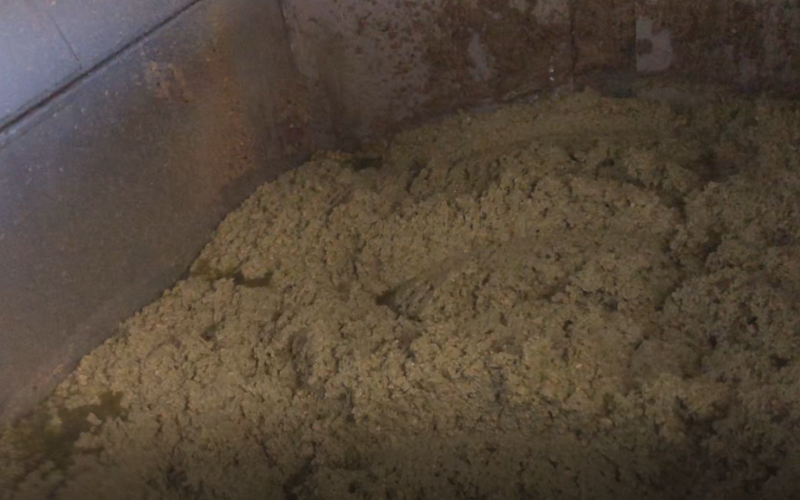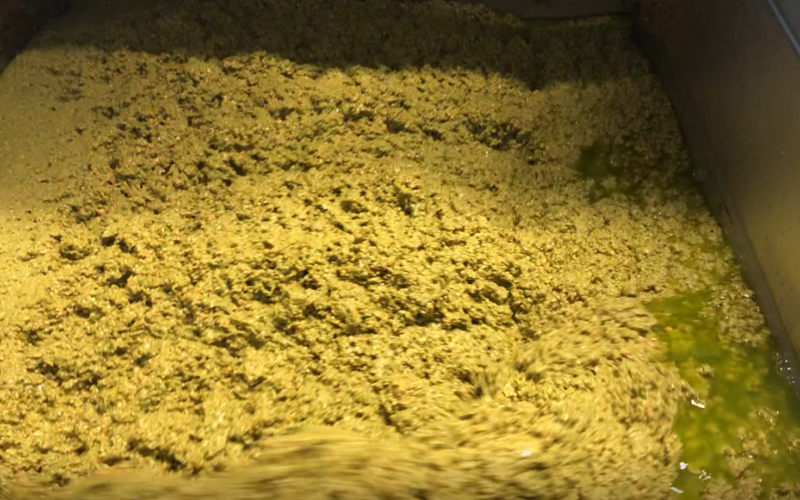| Bulk Discounts Prices | |
| Quantity | Price |
| 1 | $61.70 |
| 18 | $49.83 |
| 90 | $46.70 |
| 450 | $42.02 |
Maximise the yield in your fruit by using Pectinex Ultra Olio enzymes this processing season!
Not all enzymes are created equal...
Olive Oil is said to be 'the fruit juice of the olive' and is able to be consumed directly after processing.
For decades, industrial pectolyic enzymes, produced by micro-organisms, are used in fruit juice production and was therefore able to apply this concept to olive oil productions. Over 30 years ago the first attempts were made by adding pectolytic enzymes to the malaxing process.

96 - 98% of the oil is found in the flesh (mesocarp) and skin (epicarp). The remaining oil is found in the pit (endocarp). The majority of the oil is located in the vacuoles but the bound oil is not accessible in the extraction process and is therefore lost in the waste. When processing, the oil that has been released has been done by the natural enzymes contained in the olive fruit.
You are now able to retrieve more of this 'lost oil'. This can be achieved when enzymes are added to the malaxing process to break down the bound cells to release extra oil that would have normally been disposed of with the waste.
Pectinex Ultra Olio (formerly NZ33095) is a more concentrated and robust product compared to Pectinex Ultra SPL
"The oils obtained with the use of enzyme treatment show higher levels of phenolics, volatiles, tocopherols, carotenes and chlorophyls and lower levels of oxidised triglycerides and diglycerides, thus becoming less susceptible to oxidation, more stable and aromatic." Quoted from article about the Impacts of processing operations on oil quality.Olive Oil Flows from Extraction trials
Earlier trials have concluded that using NZ33095 results according to an RIRDC study show the high main-chain activity showed lower pyropheophytin values. Whilst higher polyphenols resulted compares to other enzymes.
Other benefits of using enzymes is...
More Information:
| File | Title | File Description | Type | Section |
|---|---|---|---|---|
| Kosher_Grain_and_Oil_2025.pdf | Kosher Certificate - Novozymes | Specifications | Document | |
| Halal_Grain__Oils_2025.pdf | HALAL certificate Grains and Oils - Novozymes | Specifications | Document | |
| Viscozyme_L_-_FSSC_22000.pdf | Novozyme Food Safety Certification | Specifications | Document | |
| Pectinex_Ultra_Olio_-_ISO_9001.pdf | Novozymes ISO 9001 | Specifications | Document | |
| Pectinex_Ultra_Olio_-_ISO_14001.pdf | Novozymes ISO 14001 | Specifications | Document | |
| Pectinex_Ultra_Olio-GMO_Status_short.pdf | GM Statement Pectinex Ultra Olio | Specifications | Document | |
| Pectinex_Ultra_Olio_-_GBE_-_PDS.pdf | Pectinex Ultra Enzymes PDS | Brochures | Document | |
| SDS_-_Pectinex_Ultra_Olio.pdf | Pectinex Ultra SDS | Brochures | Document | |
| Flow_Chart_Olive_Oil_Pectinex_ultra_olio_0815.pdf | Flow chart Pectinex Ultra Olio | Brochures | Document | |
| Enzymes_Olive_Oil_Technical_Presentation.pdf | Enzymes Olive Oil Technical Presentation | Brochures | Document | |
| Olive_Oil_Extraction_Application_Sheet.pdf | Enzymes Olive Oil Extraction Application Sheet | Brochures | Document | |
| Pectinex_Ultra_Olio_-_Non-animal_vegan_TSE-BSE.pdf | Pectinex Ultra Olio - Vegan Statement | Brochures | Document | |
| NGP_Statement_1.pdf | NGP - Non-GMO Project - Novozyme | Specifications | Document | |
| Kosher_Food__Beverage_2025.pdf | Kosher Food & Beverage 2025 Novozyme | Specifications | Document | |
| Halal_Food__Beverages_2025.pdf | Halal Certificate Food and Beverage 2025 | Specifications | Document | |
| RIRDC-11-091-Evaluation-of-Processing-Aids-Canamasas-REPORT_FINAL.pdf | Evaluation of Processing Aids for Olive Oil Extraction and Quality Improvement - RIRDC | This RIRDC report by Pablo Canamasas and Leandro Ravetti examines the use of traditional and new processing aids - such as talc, enzymes, salt, and calcium carbonate - to enhance olive oil extraction efficiency and maintain oil quality. The study provides | Specifications | Document |
OLIVE OIL PROCESSING AIDS - COADJUVANTS
Research about enzyme application in olive oil extraction processing can be effective in obtaining higher yields, faster oil & water separation, leading to smoother operation of machinery, less residual oil in the pomace and improved oil clarity.
Pectinase enzymes are used extensively around the world in the fruit juice and wine industries and increasingly in the olive oil industry.
Pectinase enzymes are produced by submerged or surface fermentation from microorganisms under highly controlled conditions. There are relatively few primary producers (manufacturers) of pectinase enzymes in the world.

Manufacturers vs Suppliers of Enzymes.
There are suppliers to the industry who do not manufacture enzymes but buy them in concentrates (i.e. a high-activity enzyme), then dilute and formulate a finished product. Dosage recommendations for these cheaper products often do not correlate with achieving sufficient enzyme activity in the process to give maximum oil yield.
What should you expect to see by using Enzymes in olive oil processing?
During April 2018 at a Processing Workshop in Drysdale Victoria, I noted an interesting response from the Owner of the property, Manzanillo Grove during the processing trial that took place with over 35 producers from all over the country who had said “I have never seen Enzymes interact this way before… there is oil everywhere. Another observation is the paste was also performing much more quickly and there is an incredible increase in the amount of extra oil. We are impressed with the results of the processing demonstration today.” Jacques Kint, Manzanillo Grove.

Observations: Paste not as fluid, took longer to release oil, not as much oil pooling.

Observations: More oil pooling, better fluidity of paste, quicker oil release.
There is a response rate between enzyme dose and oil yield. A low strength enzyme can result in minimal improvement in yield and inferior performance if dosed at the same rate as a high strength product. To give the same performance, low-activity enzymes need to be dosed at much higher rates.
Even though the price seems competitive on the surface you may actually see yourself paying considerably more in comparison… you can waste your money by using cheap, low-strength enzymes!